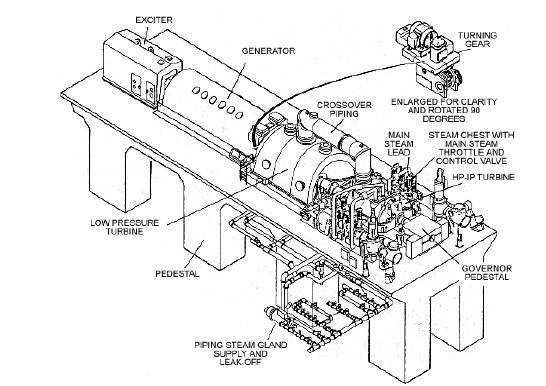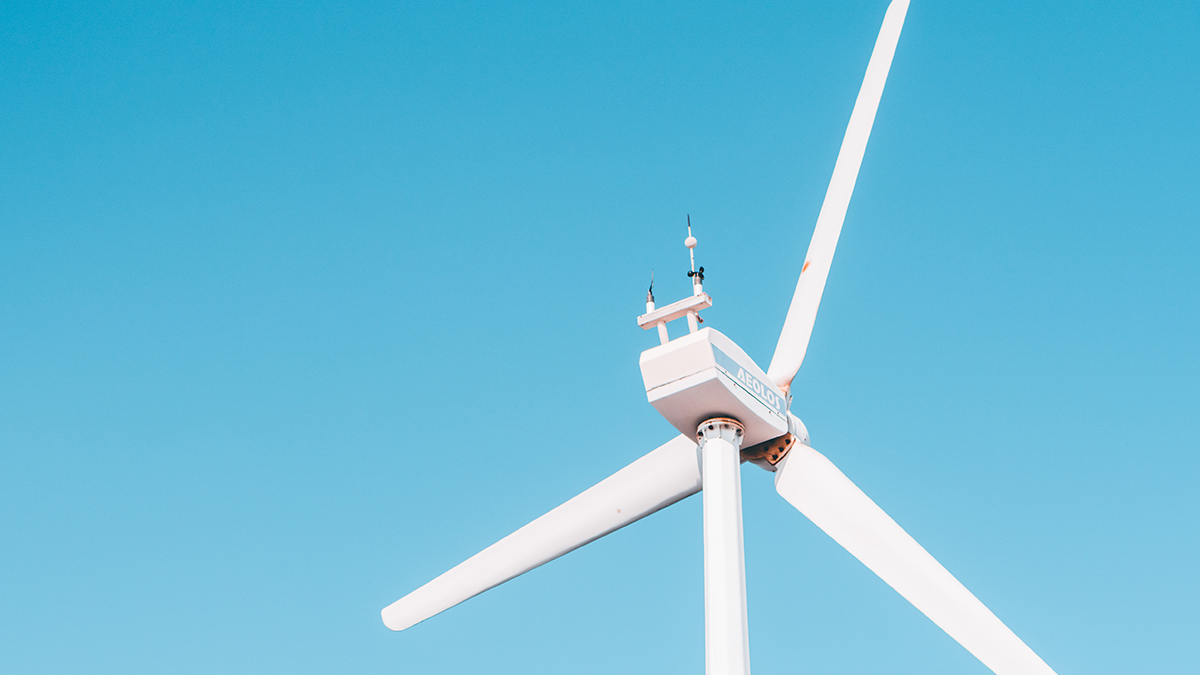De Laval, Parsons and Curtis developed the concept for the steam turbine in the 1880s. Modern steam turbines use essentially the same concept but many detailed improvements have been made in the intervening years mainly to improve turbine efficiency.
Steam turbines are used in all of our major coal fired power stations to drive the generators or alternators, which produce electricity. The turbines themselves are driven by steam generated in ‘Boilers‘ or ‘Steam Generators‘ as they are sometimes called.
Energy in the steam after it leaves the boiler is converted into rotational energy as it passes through the turbine. The turbine normally consists of several stages with each stage consisting of a stationary blade (or nozzle) and a rotating blade. Stationary blades convert the potential energy of the steam (temperature and pressure) into kinetic energy (velocity) and direct the flow onto the rotating blades. The rotating blades convert the kinetic energy into forces, caused by pressure drop, which results in the rotation of the turbine shaft.
The turbine shaft is connected to a generator, which produces the electrical energy. The rotational speed is 3000 rpm for Australian (50 Hz) systems and 3600 for American (60 Hz) systems.

A typical power station steam turbine and its external parts




